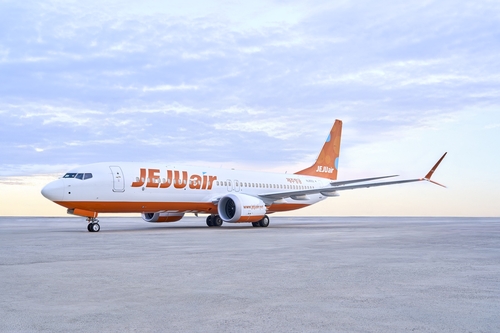
(Seoul=Yonhap Infomax) Jong Hwa Han – The prolonged slump in South Korea’s low-cost carrier (LCC) sector is expected to push Jeju Air Co., the country’s largest budget airline, into the red this year.
Jeju Air has implemented a fleet modernization strategy to cut maintenance and fuel costs, while also issuing perpetual bonds to manage its soaring debt ratio in the short term.
1,295 Billion Won in Cumulative Losses for Q1–Q3—Operating Profitability Deteriorates
According to industry sources on the 24th, Jeju Air, which posted profits in both 2023 and 2024, has seen its performance sharply deteriorate this year.
The airline recorded losses in all three quarters, with the deficit widening from KRW 32.6 billion ($24.7 million) in Q1, to KRW 41.9 billion ($31.8 million) in Q2, and KRW 55.0 billion ($41.6 million) in Q3, totaling KRW 129.5 billion ($97.9 million) for the first nine months.
NH Investment & Securities Co. reports that Jeju Air’s yield—the revenue earned per passenger per kilometer—on international routes is expected to fall from KRW 74.5 last year to KRW 66.7 this year. Domestic route yield is projected to drop from an average of KRW 118.1 to KRW 96.9.
This translates to a year-on-year decline in operating profitability of 10.5% for international routes and 18.0% for domestic routes.
Key factors behind the worsening results include a strong won-dollar exchange rate and oversupply in the LCC sector, with nine airlines competing for market share.
While Jeju Air managed to grow revenue despite declining operating profit through 2023, this year even sales have slumped.
Jeju Air’s revenue hit a record KRW 1.9358 trillion ($1.46 billion) in 2024, up from KRW 1.724 trillion ($1.30 billion) in 2023. However, cumulative sales for the first three quarters of this year reached only KRW 1.1053 trillion ($834 million), down 25.5% from KRW 1.4854 trillion ($1.12 billion) in the same period last year. The timing of the Chuseok holiday—September last year versus October this year—also affected the comparison.
An industry official commented, “The number of LCCs in Korea is not unusually high compared to other countries, but the concentration of aircraft on profitable routes has deepened losses across the sector.”
Fleet Modernization to Counter Industry Downturn—Debt Surge Remains a Challenge
Jeju Air is aggressively modernizing its fleet as part of a structural overhaul to reduce costs.
By introducing new, fuel-efficient aircraft, the airline aims to cut fuel and maintenance expenses, as well as leasing costs.
In 2018, Jeju Air signed a contract to purchase 50 Boeing B737-8 aircraft, including 10 options, and has been taking delivery since 2023.
As of this year, eight B737-8s have been delivered. Jeju Air currently operates 44 passenger aircraft, with next-generation models accounting for 18% of the fleet.
The average age of Jeju Air’s fleet has also dropped from 14 years at the end of last year to 12.9 years.
However, operating losses and capital expenditures for new aircraft have driven up the company’s debt ratio.
Total debt surged from KRW 1.6744 trillion ($1.26 billion) at the end of last year to KRW 1.9604 trillion ($1.48 billion) at the end of Q3, with the debt ratio jumping from 517% to 695%, approaching the 700% mark.
To shore up its balance sheet, Jeju Air issued KRW 100 billion ($75.6 million) in privately placed perpetual bonds at a 6.50% coupon in July.
Perpetual bonds allow issuers to extend maturity at their discretion and pay interest indefinitely, qualifying as equity on the balance sheet.
Without the perpetual bond issuance, Jeju Air’s Q3 debt ratio would have soared to 1,131%.
A Jeju Air official stated, “It is true that operating losses have pushed up our debt ratio, but we are exploring various measures to address the debt issue.”
jhhan@yna.co.kr
(End)
Copyright © Yonhap Infomax Unauthorized reproduction and redistribution prohibited.

